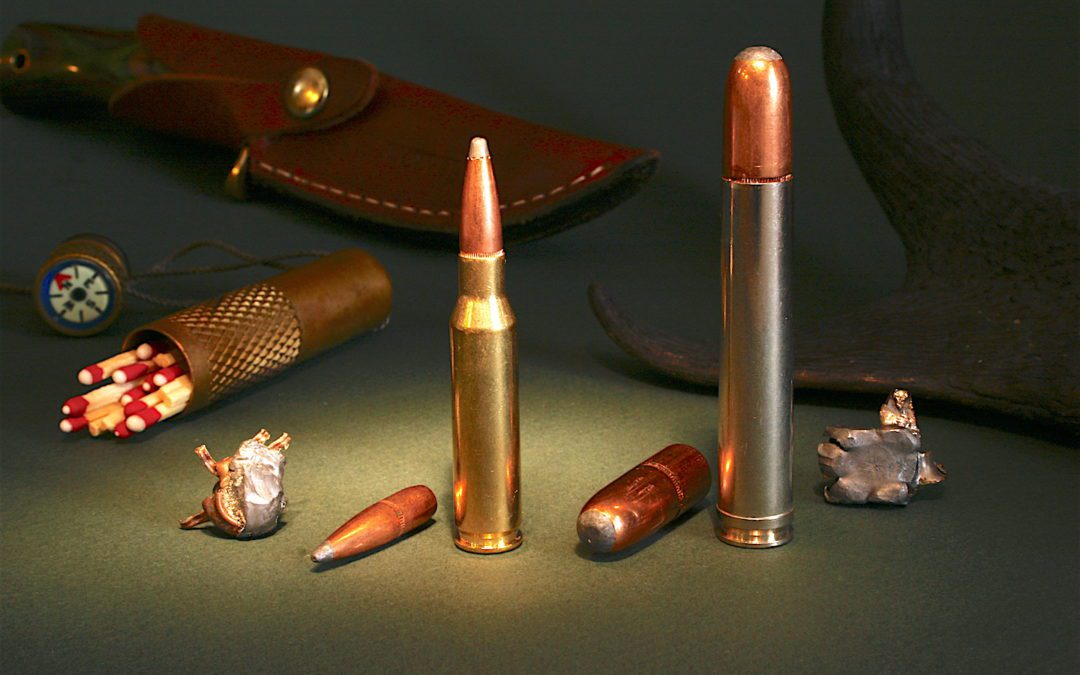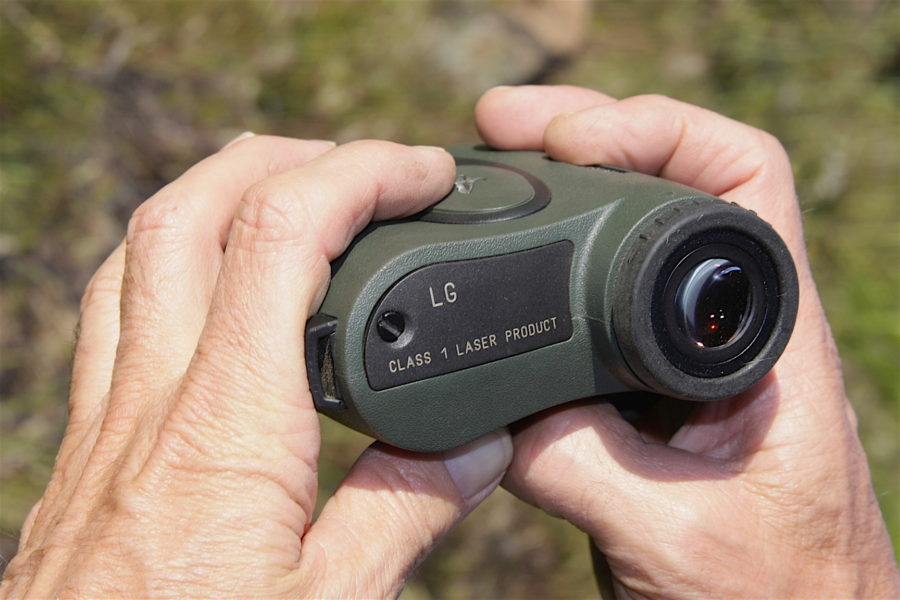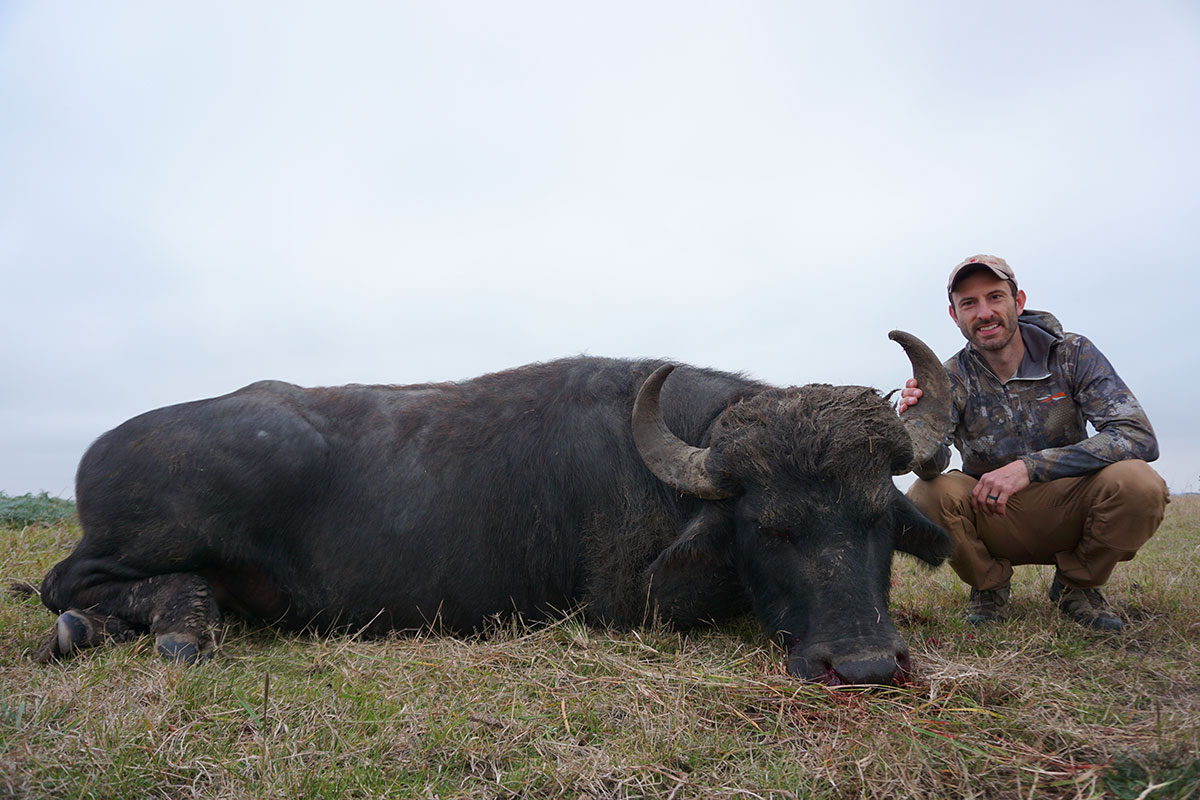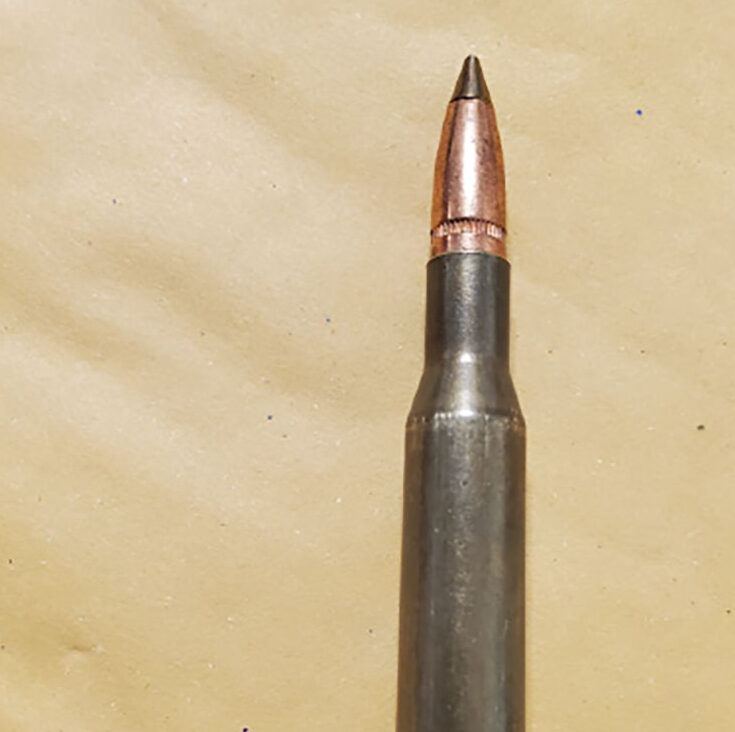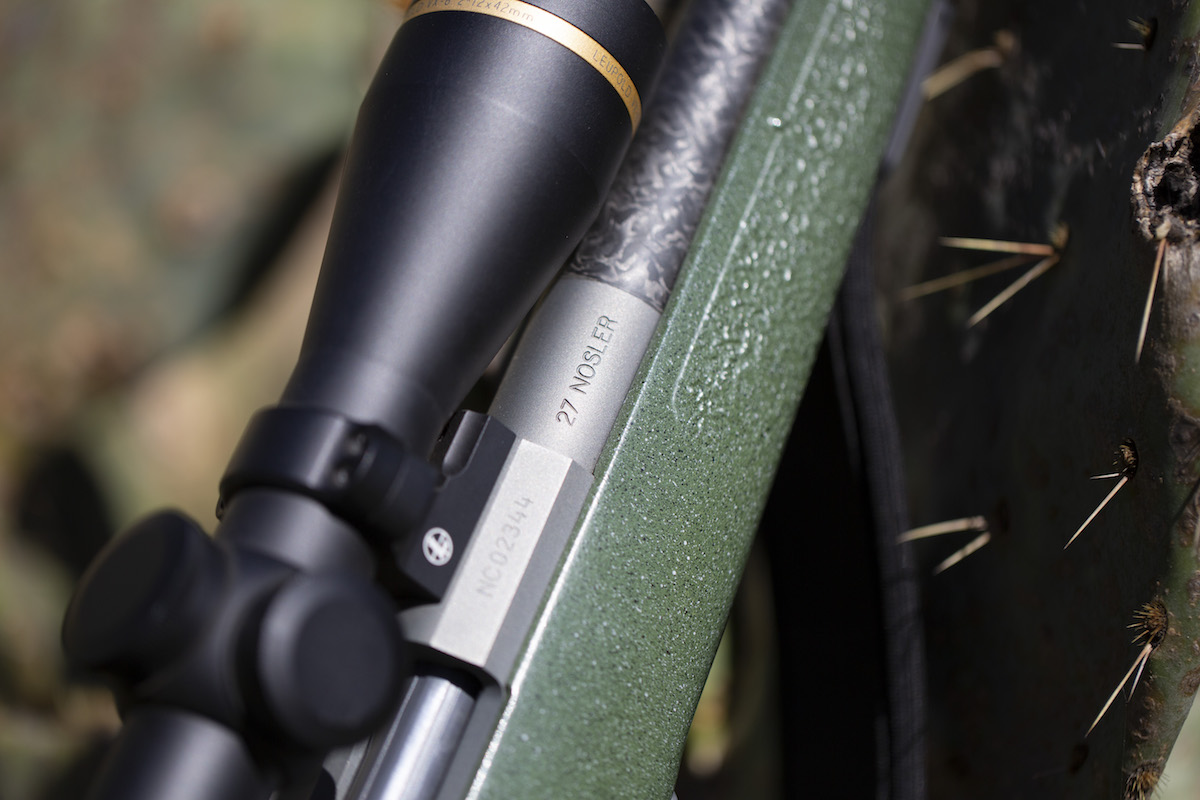It’s a fact that magnum velocity and terminal projectile energy don’t matter much. So why do we have all these magnum velocity cartridges?
We hunters often like to point out that magnum velocity and terminal projectile energy don’t matter much because the game we take can’t detect the difference. And that’s a fact. A moose shot through the heart is joining you for dinner whether hit with a 700-grain 50-caliber bullet or a 70-grain 22-caliber. So why do we have all these magnum velocity cartridges? Why this never-ending introduction of this magnum and that magnum, this more efficient cartridge and that amazing new hot rod caliber?
Magnum Velocity Leads to:
Sales. And customer demand. One feeds the other in an unending cycle of development, redevelopment and — let’s face it — redundancy. Many of us old (and not so old) curmudgeons like to complain about this silly, relatively useless “reinvention of the wheel,” but is it really all that useless? Let’s take a closer look…
While it’s true that the 7×57 Mauser and/or 30-06 Springfield are more than adequate for any hunting purpose, there is justification for the 7mm Remington Magnum and 300 Weatherby Magnum. Both add about 300 to 400 fps to the muzzle velocity of their smaller “cousins.” This magnum velocity results in significantly more energy on target but, again, if a broadhead on the end of an arrow carrying 60 f-p energy can kill a cape buffalo and a 55-grain varmint bullet can instantly terminate a zebra stallion (I saw it happen), why do we need all that magnum velocity and energy?
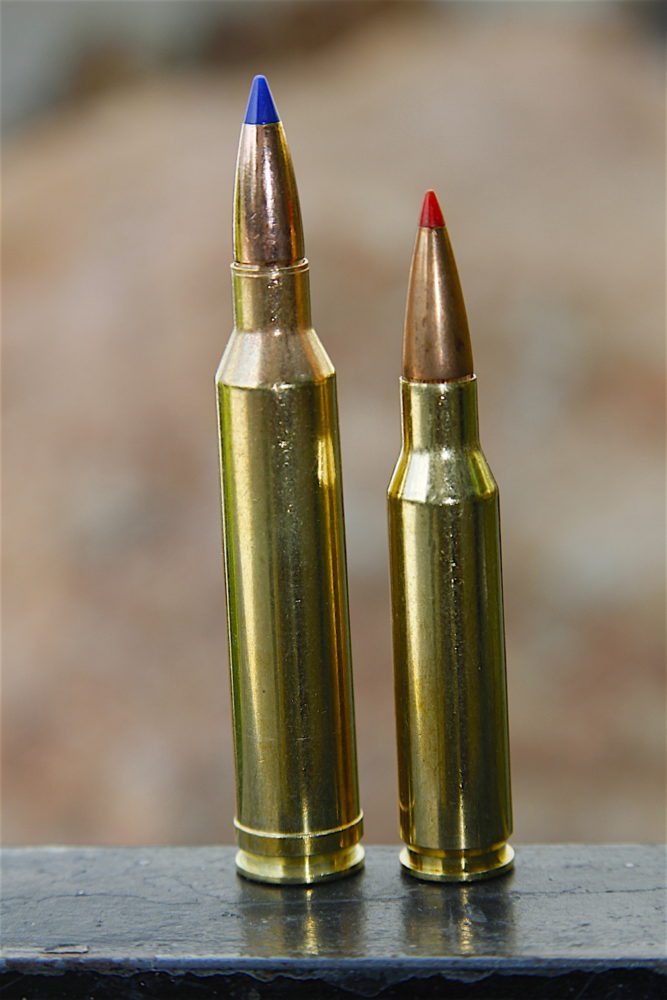
There is justification for the 7mm Rem. Mag. as well as the 7mm-08 Rem. The former extends one’s maximum point blank range. The other duplicates or slightly exceeds 7×57 Mauser performance in today’s modern, short-action rifles.
Magnum Velocity Equals Knockdown Power…Sort of
The industry calls it knockdown power and sells it hard. But early 20th century commercial market hunter Karamojo Bell consistently laid low everything from kudu to cape buffalo to bull elephants (some 800 of them) with a 275 Rigby. That’s the Brit’s title for the German 7x57mm Mauser cartridge. As many of you know, this generates about 100 fps less muzzle velocity than the 7mm-08 Remington. So why has our industry gone on to create some dozen 7mm cartridges faster and more powerful than the 7x57mm Mauser? To increase sales, of course, but also to meet customer demand.
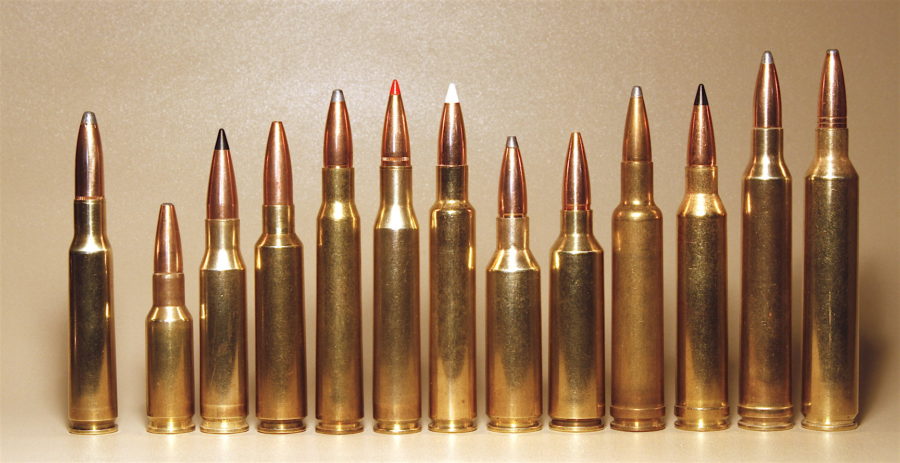
Even though the 7x57mm Mauser on far left can take and has taken all game species on Earth, we’ve decided to invent a dozen more 7mm cartridges, many with mega magnum velocity.
Human nature being what it is, we are always looking for bigger and better, new and improved, faster and stronger. But there’s more than just that behind our never ending creation of new cartridges. There’s a very real desire to more easily hit what we intend to hit and anchor what we intend to anchor. That’s the real reason we invent ever faster cartridges.
Magnum Velocity Doesn’t Kill Game
As I’ve harped on time and time again, energy (beyond a basic level sufficient to damage vital organs) doesn’t kill game, hemorrhaging does. Unless you strike the central nervous system, an animal expires because your projectile causes blood pressure to drop sufficiently to “knock it out.” This can happen in two seconds or several minutes depending on how severe and rapid the blood loss. This is why heart-shot deer (even small ones punched by something exorbitant like a 300 Remington Ultra Magnum) often — nay, usually — run for several seconds before wobbling and falling over. Low blood pressure. After that, without the cardiovascular system delivering freshly oxygenated blood to the brain, brain cells die.
Yes, there is so-called hydrostatic shock that, like a brain/neck shot, kills instantly, but it’s inconsistent at best, seeming to occur when an animal is hit in just the right spot when it’s heart is beating to create maximum hydraulic pressure. This additional pressure seems to impact blood vessels in the brain, resulting in a knockout akin to striking the central nervous system. But this can happen, usually happens, with a lightweight, high velocity bullet packing much less energy than a heavy, slower bullet. I’ve seen small whitetails shot through the heart with 50-caliber slugs run 30 yards, coyotes smacked center chest with a 300 magnums dash just as far, and the same critters felled instantly by a 22-250 Remington.
So why the ballyhoo about knockdown power? Because it sells guns and ammo! So does speed. Speed kills. Of course. But only if it results in a strike on target, and here we are getting near the real reason for increasing muzzle velocities and inventing new cartridges.
The Real Benefit
Additional bullet velocity at the muzzle translates into more reach downrange. A flatter trajectory. Prior to the advent of laser rangefinders, this was a big deal. If you didn’t know for certain your target was at 200 yards or 400, a bullet that would fly “flat” enough to reach its vitals across that entire distance was something to cheer. Thus did the arms race accelerate.
But these days we have laser rangefinders, VLD bullets and ballistic calculators that enable us to put relatively small bullets from light recoiling cartridges like the 6.5 Creedmoor on target at ridiculous ranges. So are magnums now obsolete?
Is Magnum Velocity Losing Popularity?
Time will tell. Honestly, I think they could reach that point. I’m hearing more and more shooters voicing the discovery that they can accomplish with their “undersized” cartridges what they used to assume only their magnums could handle. Elk and even moose are falling to 140-grain bullets launched at just 2,700 fps. Laser rangefinders are changing American cartridge preferences. With this, cartridge development is shifting from the search for more speed to things like less recoil, longer barre life, less expensive ammo, increased accuracy, and twist rates that stabilize higher B.C. bullets.
What’s the take away from all this? Perhaps re-evaluation of conventional wisdom and preconceived notions. The old idea that you needed at least a 300 Win. Mag. and 180-grain bullets to cleanly take an elk may not be absolute. The suspicion that the 7mm-08 Remington wasn’t quite big enough for old mule deer bucks might be wrong. The fear that an easy shooting 260 Remington is merely going to cripple a moose might require new testing.

This Australian water buffalo fell to a single shot in 2002 from the then new (and now nearly obsolete) 7mm WSM.
Many old-school hunters are going to stick to tradition, bragging that the 30-30 is still the surest whitetail cartridge in the woods, or the 45-70 can stop a grizzly as surely today as when Custer shot it, and the 30-06 can still handle any big game animal on the planet. But that Afghan War vet with the smartphone app and 6.5mm Creedmoor can probably heart shoot at 600 yards what I with my 30-30 might be lucky to chest hit at 100 yards. With big game hunting opportunities dwindling under the relentless onslaught of human population demands, I’ve a hunch more efficient cartridges are going to become the norm. People seem much more eager to embrace technology than learn old fashioned woodsmanship.
So brace yourself. New rifles, bullets and cartridges are going to continue testing the marketplace.
Note: This article originally appeared on RonSpomersOutdoors.com.
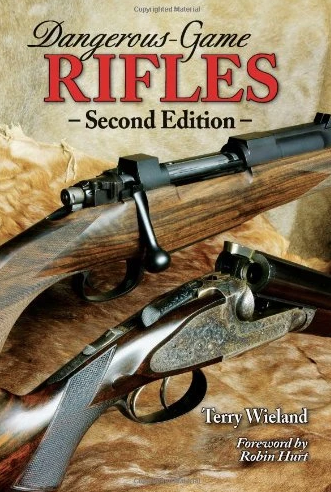 In this book, firearms expert Terry Wieland explores the history of big-bore rifles for dangerous game, covers rifles and ammunition available today, examines controversies about killing power, and explains the nuances of big rifles and how to use them.
In this book, firearms expert Terry Wieland explores the history of big-bore rifles for dangerous game, covers rifles and ammunition available today, examines controversies about killing power, and explains the nuances of big rifles and how to use them.
The first edition of Dangerous-Game Rifles appeared in 2006, sold out quickly, was reprinted and sold out again. Since it publication, there have been significant developments in the world of big-bore rifles and ammunition. This revised and expanded second edition includes additional chapters on the making of big rifles, practice and usage, updated information on available rifles and ammunitions and more than 100 new photographs, many in color. Shop Now

